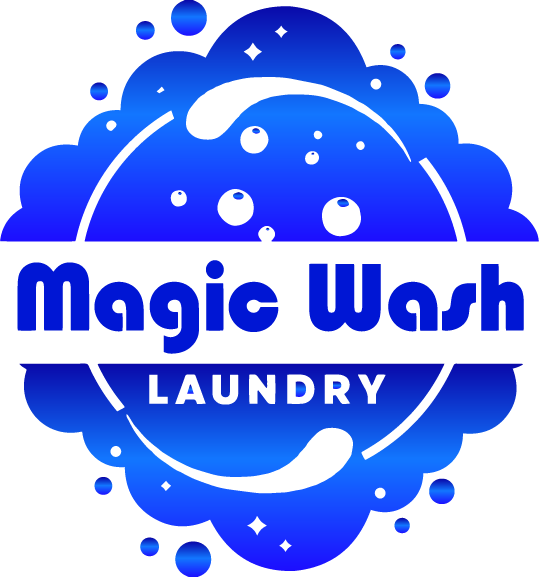Pegs and clips are small, everyday tools that many people use, but not everyone realizes just how important they are. These simple tools have a big impact on making our lives easier, more organized, and even more fun! Whether you use them to hang clothes, organize papers, seal bags, or get creative with crafts, pegs and clips are versatile and essential tools that serve multiple purposes. In this article, we’ll dive into what pegs and clips are, their many uses, how to choose the right ones for different tasks, and how to care for them. Plus, we’ll explore some creative ways to use pegs and clips that you might not have thought of!
Read More: Washeterias Near Me / Laundromat Tyler TX / Best Laundry Services / Self Service Laundry / Top Rated Washers & Dryers
Read More: vitacures health blog, digital marketing services / cake gallery
Check our shop: Magic Wash Laundromat
The Mighty Pegs and Clips
What Are Pegs?
Pegs are small tools that grip or hold things together. The most common use for pegs is to hang clothes on a clothesline, but they have many other uses too. They can be made from a variety of materials, including wood, plastic, and metal. Wooden pegs tend to be stronger and more durable, while plastic pegs come in many fun colors and are often used for lighter tasks.
Pegs are commonly used in households, schools, offices, and even in many industrial settings. Their ability to hold things together makes them incredibly versatile and useful in many everyday situations.
Common Uses of Pegs
- Hanging Clothes: One of the most well-known uses of pegs is to hang clothes on a clothesline. On a windy day, pegs hold your clothes securely on the line, preventing them from blowing away. Without pegs, your laundry would be scattered everywhere! Wooden pegs, in particular, are ideal for this purpose because they are strong enough to hold heavy garments like towels, jeans, or blankets.
- Sealing Bags: Another practical use for pegs is sealing bags. Whether you’re opening a packet of chips, snack bags, or other food items, pegs can be used to seal the bags tightly and keep the contents fresh. For this task, plastic pegs are a good option because they are light and easy to handle.
- Organizing Wires: Many people struggle with tangled wires, whether it’s from electronics, chargers, or cables. Using pegs to secure and organize wires is an easy solution to this common problem. Simply loop the wire around the peg, and you have a neat and organized storage solution.
- Holding Papers Together: Pegs can also be used to clip papers together. When you need to keep documents in order, pegs can be a simple and effective tool. While paper clips are a more common option, pegs can hold thicker stacks of papers without slipping off.
- Craft Projects: For those who enjoy DIY projects and crafts, pegs can be a handy tool. They can be used in a variety of ways, such as creating photo displays, making holiday decorations, or even building small structures.
Pegs come in many shapes, sizes, and materials, and they are available for both indoor and outdoor use. For example, outdoor wooden pegs are typically designed to be weather-resistant, while plastic pegs come in a range of colors and are often used indoors.
What Are Clips?
Clips, like pegs, are used to hold things together, but they work a bit differently. Instead of gripping or hanging items, clips work by pressing them together. Clips come in many sizes, shapes, and materials, such as metal and plastic, and they can hold everything from papers to cables to food bags.
Clips are incredibly useful for organizing and managing various tasks around the home, office, and even in other places like schools or workshops. They are often used in offices to manage paperwork or in kitchens to seal food packages.
Common Uses of Clips
- Holding Papers Together: Clips are commonly used to keep documents together. Unlike pegs, which are more suited for hanging, clips can hold large stacks of papers firmly in place. They are often used in offices, schools, and homes to organize important documents, notes, or files. Metal clips, in particular, are perfect for heavier stacks of paper.
- Organizing Bills: If you have a lot of bills to manage, clips can help you stay organized. You can group your bills by date or category and use a clip to keep them together. This makes it easier to find what you need and ensures you don’t lose any important documents.
- Keeping Food Fresh: Food clips are widely used to seal bags of chips, cereal, or other snacks. By securing the bag with a clip, you can prevent the contents from going stale and extend their shelf life. Plastic clips are ideal for this job because they can be sealed tightly without causing damage to the bag.
- Managing Cables: Similar to pegs, clips can also be used for managing cables. They can help you keep phone chargers, computer cables, and other cords organized. Instead of letting them tangle in a drawer, you can use clips to neatly bundle them together and keep them easy to access.
- Marking Books: If you’re an avid reader, clips can be used as bookmarks to help you keep your place in a book. You can even decorate clips to make them more personalized and unique.
Clips come in various forms, such as bulldog clips, binder clips, and spring clips. Each type is designed for different tasks, so it’s essential to choose the right clip for the job.
Pegs vs. Clips: Which One Should You Use?
Both pegs and clips are incredibly useful tools, but they are designed for different types of tasks. Here’s a quick comparison to help you decide which one to use:
| Feature | Pegs | Clips |
|---|---|---|
| Material | Wood, Plastic | Metal, Plastic |
| Use | Hanging, Sealing | Pressing, Holding |
| Shape | Various | Various |
- Pegs: Pegs are primarily used for hanging items, such as clothes, or for sealing bags. They grip items, making them ideal for outdoor use, like hanging laundry.
- Clips: Clips are more suitable for pressing things together. They are perfect for organizing paperwork, sealing food bags, or managing cables.
Why Should You Use Pegs and Clips?
There are many reasons why pegs and clips are so helpful. These tools are affordable, easy to use, and incredibly versatile. Let’s take a look at some of the benefits they offer:
- Affordability: Both pegs and clips are inexpensive and widely available. They are great tools for anyone on a budget who needs an easy solution to everyday tasks.
- Ease of Use: Even if you have no experience using tools, pegs and clips are straightforward and simple to use. They don’t require any special skills or knowledge, making them accessible to everyone.
- Organization: Whether it’s keeping your laundry in place, organizing papers, or sealing food bags, pegs and clips help you stay organized. These small tools can help you tidy up your home or office and prevent clutter from building up.
- Time-Saving: These tools save you time by making tasks faster and more efficient. You don’t have to worry about your clothes blowing off the line or your cables getting tangled when you use pegs and clips.
For example, imagine a rainy day when you need to hang your laundry indoors. By using pegs, you can easily hang your clothes in a small space and keep them from touching the floor. Or think about the piles of paper on your desk at work. With clips, you can quickly group your papers and keep everything neat and organized.
Creative Uses for Pegs and Clips
While pegs and clips are useful for everyday tasks, they can also be used in creative ways. Here are some fun and innovative ideas to get the most out of these simple tools:
Decorating with Pegs
- Photo Display: One creative way to use pegs is to create a photo display. Attach pegs to a string or wire and use them to hang your favorite photos. This creates a unique and personal display that adds a touch of charm to your home.
- Wall Art: Pegs can also be used to create wall art. You can arrange colorful pegs in fun patterns or shapes to create a decorative piece for your room. Get creative and experiment with different designs!
Crafting with Clips
- Bookmarks: Clips can be turned into stylish bookmarks. Decorate a clip with ribbons, beads, or fabric, and you have a personalized bookmark that adds character to your reading materials.
- Jewelry Holders: You can also use clips to create a jewelry holder. Hang your earrings, necklaces, or bracelets on clips to keep them organized and easy to find.
Pegs and clips are not just functional—they can also be a source of creativity! Use them in your next DIY project and let your imagination run wild.
How to Choose the Right Pegs and Clips
Selecting the right type of peg or clip for the task is important for achieving the best results. Here’s how to choose the right one:
- For Outdoor Use: If you need to hang clothes outdoors, wooden pegs are a great choice. They are durable and can withstand the wind.
- For Paperwork: For managing paperwork, metal clips are perfect because they are strong and can hold larger stacks of paper.
- For Food Storage: If you want to keep food fresh, plastic clips are ideal. They seal bags tightly and prevent air from getting in.
Caring for Your Pegs and Clips
To make sure your pegs and clips last for a long time, it’s important to care for them properly. Here are some tips:
- Clean Regularly: Wipe your pegs and clips with a damp cloth to remove dirt and dust. Keeping them clean helps maintain their performance.
- Store Properly: Store your pegs and clips in a dry place to prevent rust or damage. If you’re using metal clips, moisture can cause them to rust over time.
- Check for Damage: Regularly inspect your pegs and clips for signs of wear and tear. If they are cracked or broken, replace them to ensure they continue to work effectively.
Conclusion
Pegs and clips are simple yet powerful tools that serve a variety of functions in everyday life. From organizing papers to hanging clothes and even creating fun crafts, these tools make our lives easier and more organized. With so many uses and benefits, it’s clear that pegs and clips are more than just basic tools—they are essential items in every home, office, and workplace.


